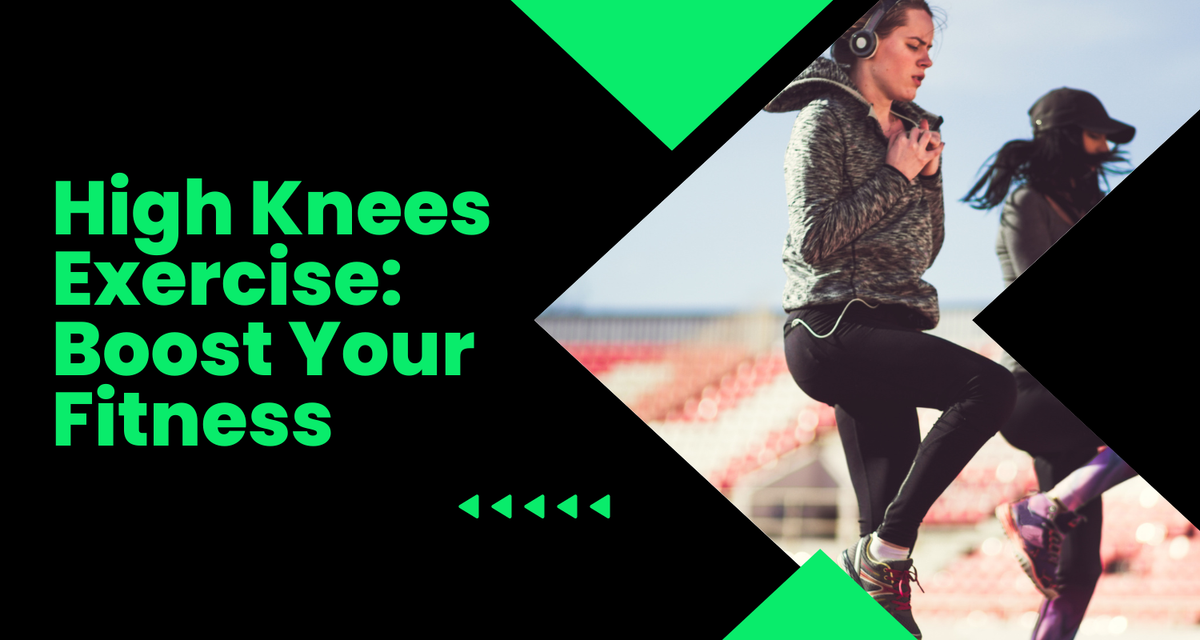High Knees Exercise: A Dynamic Way to Boost Your Fitness

High knees exercise, though seemingly simple, packs a powerful punch when it comes to improving your cardiovascular health, strengthening your lower body, and engaging your core muscles.
In this article, we'll delve into the world of high knees, exploring its benefits, proper execution, variations, and how you can incorporate it into your fitness routine.
Benefits of High Knees Exercise
Cardiovascular Benefits
High knees are an excellent cardiovascular exercise that gets your heart rate up, enhancing blood circulation and improving overall heart health.
By engaging large muscle groups, high knees elevate your metabolism, promoting calorie burn and aiding in weight management.
Leg Strength and Endurance
Performing high knees regularly can lead to stronger and more toned leg muscles.
This exercise targets your quadriceps, hamstrings, calves, and glutes, helping to improve lower body strength and endurance.
Core Engagement
In addition to targeting your lower body, high knees also engage your core muscles.
As you lift your knees towards your chest, you activate your abdominal muscles, helping to improve core stability and balance.
How to Perform High Knees Correctly
To perform high knees correctly, stand with your feet hip-width apart and your arms by your sides.
Begin by lifting one knee towards your chest while simultaneously lifting the opposite arm.
Alternate legs in a running motion, driving your knees as high as possible with each step.
Maintain a tall posture, engage your core muscles, and land softly on the balls of your feet.
Avoid leaning back or hunching forward, and keep your movements controlled and fluid.
Variations of High Knees
High knees can be modified to suit different fitness levels and preferences. Here are a few variations to try:
Standing High Knees
Perform high knees while stationary, lifting each knee towards your chest one at a time.
Focus on maintaining good form and lifting your knees as high as possible with each repetition.
Running High Knees
Incorporate high knees into a running motion, moving forward or in place at a faster pace.
This variation adds intensity and increases cardiovascular benefits.
High Knees with Resistance Bands
Wrap a resistance band around your thighs and perform high knees while maintaining tension on the band.
This variation adds resistance, further challenging your leg muscles and enhancing strength.
Incorporating High Knees into Your Workout Routine
High knees can be incorporated into various workout routines to add variety and intensity.
Consider adding them to your warm-up routine to prepare your body for exercise, or include them in interval training or circuit workouts for a high-intensity cardio boost.
Tips for Beginners
If you're new to high knees, start slowly and focus on mastering proper form before increasing speed or intensity.
Gradually increase the duration and intensity of your high knees sessions as your fitness level improves.
Safety Precautions and Considerations
While high knees are generally safe for most people, it's essential to listen to your body and avoid overexertion.
If you have any pre-existing medical conditions or concerns, consult with a healthcare professional before starting any new exercise regimen.
FAQs about High Knees Exercise
1. How many high knees should I do?
- Start with 1-2 sets of 10-15 repetitions and gradually increase as your fitness improves.
2. Can high knees help with weight loss?
- Yes, high knees are an effective calorie-burning exercise that can aid in weight loss when combined with a balanced diet and regular exercise routine.
3. Are high knees suitable for all fitness levels?
- High knees can be modified to suit different fitness levels, but individuals with knee or hip issues should proceed with caution and consult a healthcare professional if necessary.
4. Should I consult a doctor before starting high knees?
- If you have any underlying health concerns or medical conditions, it's advisable to consult with a doctor before beginning any new exercise program, including high knees.
5. Can high knees improve my running performance?
- Yes, incorporating high knees into your workout routine can help improve running form, agility, and leg strength, which may translate to enhanced running performance.
Conclusion
High knees exercise offers a myriad of benefits for cardiovascular health, leg strength, and core stability.
Whether you're a beginner or a seasoned fitness enthusiast, adding high knees to your workout routine can take your fitness journey to new heights.
Remember to prioritize proper form, listen to your body, and gradually increase intensity to maximize results safely.
